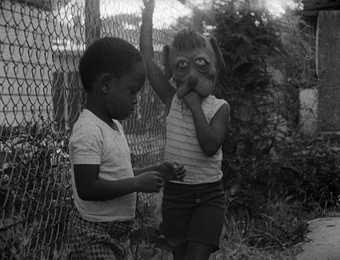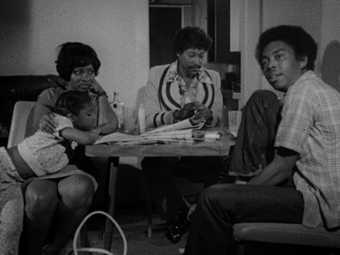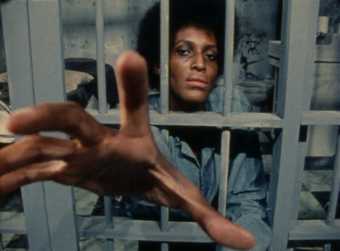Killer of Sheep
Charles Burnett, USA 1977, 35 mm, b/w, 81 min
One of the most influential and legendary independent films of the 1970s, Charles Burnett's Killer of Sheep is a remarkable picture of working class life in south central Los Angeles attuned to the poetry of the everyday.
Set in the ravaged post-manufacturing neighbourhood of Watts, the film captures in a series of vignettes the community worn down by unemployment and poverty yet still animated by moments of grace and tenderness. Filmed in real locations on weekends over several years, Killer of Sheep is built from brilliantly observed scenes of daily life featuring an expansive cast of adults and children. The film seamlessly blends scenes captured as in a documentary with its central narrative, sketching amazing characters and fleeting moments of escape from the oppressive streets and cramped apartments.
The film is centered around Stan, played by the novelist and playwright Henry Gayle Sounders, who makes his humble living in a slaughterhouse. In portraying his attempts to improve his life, the film captures the complexity of family life, filled with frustrations and thwarted desire yet also remarkable tenderness and love.
The film’s cast of children (including the director’s daughter) and its equal attention to their inner lives, provides a respite from the blighted landscape, transforming the film in the same the children transform abandoned buildings or train tracks, into places of play and invention. To accompany its multifaceted picture of life in Watts, Burnett assembled an incredible soundtrack celebrating the history of African American music from Dinah Washington, Paul Robeson, Louis Armstrong and Earth, Wind and Fire.
This intricately crafted film draws on the poetic documentaries of Basil Wright, one of Burnett’s teachers at UCLA whose iconic works Song of Ceylan 1934 and Night Mail 1936 are pioneering studies of working people, as well as the humanist work of Jean Renoir and the Italian neo-realists such as Vittorio De Sica and Roberto Rossellini. Killer of Sheep is now recognised as one of the defining films of post-war cinema.
Child of Resistance
Haile Gerima, USA 1972, 16mm, b/w & colour, 36 min
Print courtesy of the UCLA Film & Television Archive
Drawing on the radical black power movement of the late 1960s and inspired by a dream the filmmaker had after seeing Angela Davis on television in handcuffs, it features a powerful performance by Barbara O. Jones as an imprisoned activist.
Celebrated as a manifesto for the emerging new Black cinema of the time, Gerima's film is a call to arms, balancing its radical fragmented construction, allusions to the revolutionary anti-colonial writings of Frantz Fanon and the female lead’s desire for liberation for her people.
These two works heralded the arrival of two major figures, distinct in their aesthetic yet united in creating space for the radical cinema to follow.
Programme duration: 117 min





